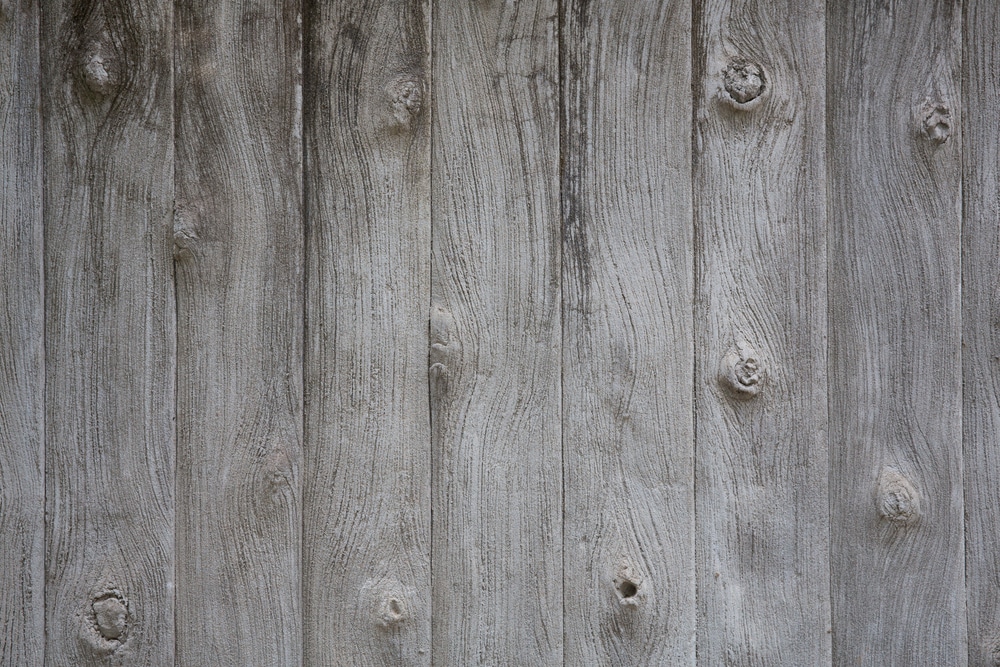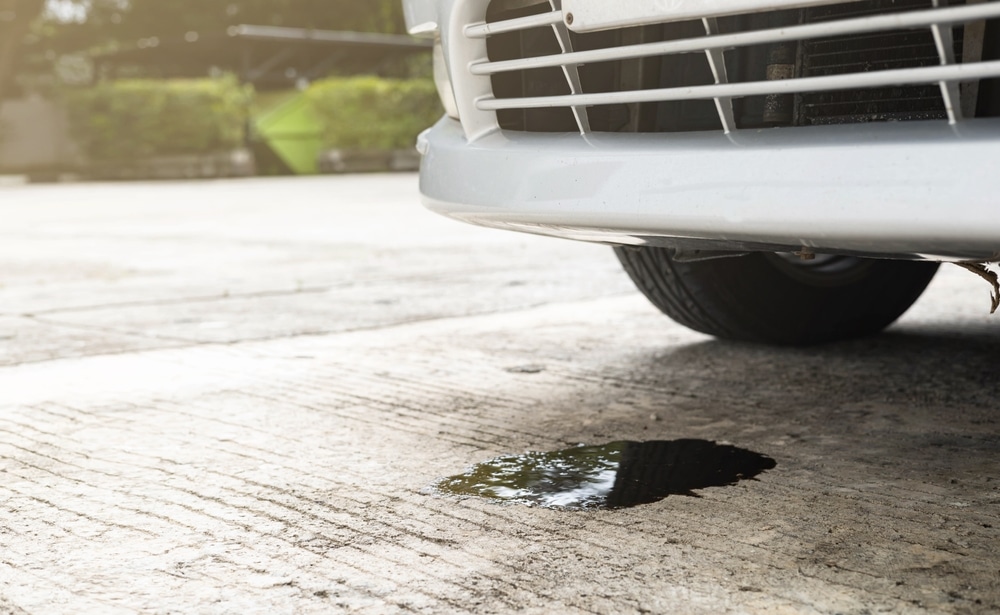Farmhouse Stained Concrete Floors vs. Wood: Which Is Right for You?
June 30, 2025The rustic charm of farmhouse-style homes has captured the hearts of homeowners across America. At the center of this aesthetic is the flooring – a crucial element that sets the tone for the entire space. When it comes to achieving that perfect farmhouse look, two contenders often rise to the top: stained concrete floors and wood flooring. Both options offer distinct advantages, but which one truly deserves a place in your home?
As homeowners increasingly seek flooring solutions that blend style with practicality, the debate between these two materials has intensified. Stained concrete floors have emerged from industrial backgrounds to become a sophisticated design choice, while wood flooring continues its centuries-old tradition of bringing warmth and character to living spaces.
At Bison Concrete, we’ve helped countless homeowners navigate this important decision. This guide will explore the key differences between farmhouse stained concrete floors and wood flooring, examining factors like cost, durability, maintenance, and aesthetic appeal. By the end, you’ll have a comprehensive understanding of which option might be the perfect foundation for your farmhouse-inspired home.
The Allure of Farmhouse Aesthetics in Modern Homes
The farmhouse style has evolved significantly from its humble origins. Today’s interpretation blends rustic elements with clean lines and modern conveniences – creating spaces that feel both timeless and contemporary. Flooring plays a pivotal role in achieving this balance.
Farmhouse aesthetics typically embrace natural materials, textural elements, and a lived-in quality that tells a story. The flooring you choose serves as the literal foundation for this narrative. It must withstand daily life while maintaining its character and charm.
According to a 2024 interior design survey, 68% of homeowners renovating their spaces cited “farmhouse” or “modern farmhouse” as their preferred aesthetic. This enduring popularity speaks to the style’s versatility and approachability. Whether you’re renovating an actual farmhouse or bringing rustic elements into a suburban home, your flooring choice will significantly impact the final result.
The question remains: can stained concrete truly deliver the warmth and character associated with farmhouse style, or is wood flooring the only authentic option? Let’s examine both contenders in detail.
Stained Concrete Floors: The Modern Farmhouse Solution
Stained concrete has undergone a remarkable transformation in recent years. Once relegated to garages and commercial spaces, this versatile material now graces the most stylish homes across the country. For the farmhouse aesthetic, acid-stained concrete offers particularly compelling advantages.
The staining process penetrates the concrete surface, creating rich, variegated colors that mimic natural stone or leather. Unlike paint, concrete stain doesn’t just sit on the surface – it chemically bonds with the concrete, resulting in permanent, fade-resistant color. This process can yield earth tones perfect for farmhouse aesthetics: warm browns, rustic tans, and subtle grays.
According to industry data from 2024, concrete staining projects have increased by 34% in residential applications over the past three years. This surge in popularity can be attributed to several factors:
- Durability that outperforms most traditional flooring options
- Cost-effectiveness compared to high-end materials
- Design versatility that allows for customization
- Compatibility with radiant heating systems
- Ecological benefits including no VOCs and utilization of existing substrate
As noted in our guide on how to stain concrete on a budget, this flooring option offers remarkable value. For homeowners seeking to achieve the farmhouse look without breaking the bank, stained concrete presents a compelling alternative to more expensive options.
One of our clients, Emma from Tulsa, transformed her 1980s ranch home into a stunning modern farmhouse by replacing outdated carpet with acid-stained concrete floors. “The rich, amber tones of the concrete stain brought an unexpected warmth to our space,” she reports. “Visitors always assume it’s some exotic natural stone – they’re shocked to learn it’s concrete.”
Wood Flooring: The Traditional Farmhouse Classic
There’s no denying the historical connection between wood flooring and farmhouse style. For centuries, hardwood has been the default flooring in rural homes, developing a patina and character that many homeowners still covet today.
Modern wood flooring options range from solid hardwood to engineered products, offering various levels of authenticity, durability, and price points. For the farmhouse aesthetic, wide-plank flooring in oak, pine, or reclaimed wood delivers the most authentic look.
The natural grain patterns, warm tones, and organic texture of wood create an inherently cozy atmosphere that many associate with the farmhouse style. As flooring trends have evolved, manufacturers have developed products specifically targeting this market, with distressed finishes and weathered appearances that mimic decades of use.
Wood flooring carries undeniable advantages:
- Natural warmth underfoot
- Acoustic properties that reduce echo
- The ability to refinish multiple times
- A renewable resource (when responsibly harvested)
- Timeless appeal that rarely looks dated
However, these benefits come with considerations. Wood flooring typically costs 30-40% more than comparable stained concrete options. Additionally, wood requires more careful maintenance and remains vulnerable to water damage, scratches, and denting – all relevant concerns in busy farmhouse kitchens and entryways.
Head-to-Head Comparison: Durability and Maintenance
When investing in new flooring, longevity becomes a primary concern. How do these materials stack up in real-world applications?
Durability Factors
Stained concrete floors excel in durability metrics. Properly installed and sealed concrete can last indefinitely, potentially outliving the structure itself. It resists:
- Impact damage from dropped items
- Scratching from furniture or pet claws
- Staining from spills (when properly sealed)
- Water damage
- UV fading
Wood flooring, while durable in its own right, generally requires more protective care. Depending on the species and finish, wood may dent from heavy furniture, scratch from pet activity, and show wear patterns in high-traffic areas. Water remains its primary vulnerability, making wood flooring potentially problematic in kitchens, bathrooms, and entryways.
Maintenance Requirements
The maintenance contrast between these materials is significant:
Stained Concrete Maintenance:
- Regular dust mopping or vacuuming
- Occasional damp mopping with pH-neutral cleaner
- Resealing every 2-3 years (depending on traffic)
- No special products required
Wood Flooring Maintenance:
- Regular dust mopping or vacuuming
- Specialized wood cleaners required
- Prompt attention to spills necessary
- Refinishing needed every 7-10 years
- Potential repairs for damaged boards
For busy families, the reduced maintenance of stained concrete offers practical advantages that shouldn’t be overlooked. As one Bison Concrete customer mentioned, “With three kids and two dogs, our stained concrete floors have been virtually indestructible. We spend our weekends enjoying our home rather than worrying about floor damage.”
Cost Analysis: Initial Investment vs. Lifetime Value
Budget considerations inevitably influence flooring decisions. Let’s break down the financial aspects of both options.
Initial Installation Costs
On average, stained concrete flooring costs between $3-$12 per square foot, depending on complexity, colors, and pattern work. This typically includes:
- Surface preparation
- Stain application
- Sealer application
- Labor costs
Wood flooring varies more dramatically in price, ranging from $8-$25+ per square foot installed. Factors affecting cost include:
- Wood species (oak vs. exotic hardwoods)
- Solid vs. engineered construction
- Board width and thickness
- Finish type
- Installation method
For a 1,000 square foot installation, this price difference could translate to savings of $5,000-$13,000 by choosing stained concrete over premium wood options.
Long-Term Value Considerations
Beyond initial costs, homeowners should consider long-term expenses:
Concrete Floors:
- Resealing costs: Approximately $1-2 per square foot every 2-3 years
- Minimal repair needs
- No replacement required
- Potential positive impact on home value (increasingly viewed as premium flooring)
Wood Floors:
- Refinishing costs: $3-5 per square foot every 7-10 years
- Potential board replacements
- Specialized cleaning products
- Strong positive impact on home resale value
While both options can enhance home value, the lifetime cost of wood flooring typically exceeds stained concrete by 40-60% when maintenance is factored in. For budget-conscious homeowners seeking the farmhouse aesthetic, stained concrete offers significant financial advantages without compromising style.
Design Versatility: Creating Your Perfect Farmhouse Look
Both flooring options offer remarkable design flexibility, but in different ways.
Stained Concrete Design Options
Modern concrete staining techniques have evolved to provide numerous aesthetic possibilities:
- Variegated earth tones that mimic natural stone
- Multi-tone applications for depth and dimension
- Scoring patterns that create the appearance of tiles or pavers
- Stamped textures that simulate other materials
- Custom stenciled designs for unique patterns
- Polished finishes ranging from matte to high-gloss
These techniques can be combined to create floors that complement any farmhouse style, from rustic to modern. The design flexibility allows concrete to take on the appearance of more expensive materials while maintaining its inherent durability advantages.
Wood Flooring Design Options
Wood flooring’s design versatility comes primarily from:
- Different wood species with unique grain patterns
- Board width variations (narrow to wide plank)
- Installation patterns (straight, herringbone, parquet)
- Finish options (matte to glossy)
- Color treatments (natural to dark stains)
- Distressing techniques for character
Both materials offer extensive customization potential, allowing homeowners to achieve their specific vision. The choice often comes down to which aesthetic elements matter most – the organic warmth of wood or the subtle depth and resilience of stained concrete.
Environmental Considerations: Sustainability Factors
For environmentally conscious homeowners, sustainability has become an important consideration in flooring selection.
Stained concrete offers several environmental advantages:
- Utilizes the existing concrete slab, requiring no additional resources
- Eliminates need for new material manufacturing
- Contains no VOCs when water-based stains and sealers are used
- Reduces need for replacement over time
- Compatible with energy-efficient radiant heating systems
- Contributes to improved indoor air quality
Wood flooring’s environmental profile depends largely on sourcing:
- Responsibly harvested wood can be a renewable resource
- Reclaimed wood offers excellent environmental benefits
- Engineered products use wood more efficiently than solid boards
- Some finishes may contain VOCs
- Shorter lifespan means more frequent replacement
For maximum sustainability, reclaimed wood or FSC-certified products offer the best wood options, while existing concrete slabs transformed through staining represent the smallest carbon footprint option.
Comfort Factors: Living With Your Flooring Choice
Beyond aesthetics and practicality, comfort significantly impacts daily satisfaction with flooring choices.
Temperature and Feel
Concrete’s thermal mass properties mean it naturally stays cool – a benefit in warm climates but potentially uncomfortable in colder regions. This can be addressed through:
- Area rugs in specific zones
- Radiant heating systems installed beneath the concrete
- Proper insulation beneath slabs in new construction
Wood offers natural insulation properties and generally feels warmer underfoot. Its cellular structure provides a slight resilience that many find comfortable for standing.
Acoustic Properties
The materials differ significantly in how they handle sound:
- Concrete tends to reflect sound, potentially creating more echo
- Wood absorbs sound waves better, creating a quieter environment
- Both can be modified with area rugs and proper underlayment
These comfort factors should be weighed against the practical benefits each flooring type provides. For many homeowners, the perfect solution involves combining elements – perhaps stained concrete in kitchens and bathrooms where moisture resistance matters most, with wood flooring in bedrooms where warmth and acoustic properties are more important.
Making Your Decision: Practical Considerations
As you weigh these options for your farmhouse-style home, consider these practical questions:
- What is your realistic budget for both initial installation and long-term maintenance?
- How much foot traffic will your floors endure?
- Do you have pets that might damage wood floors?
- Is moisture a significant concern in your living spaces?
- How important is underfoot warmth in your climate?
- Are you planning to sell your home in the near future?
- Do you have existing concrete that could be transformed?
For many homeowners, the answer lies in examining your specific lifestyle needs alongside aesthetic preferences. Consider consulting with a professional at Bison Concrete who can assess your specific situation and provide personalized recommendations.
Frequently Asked Questions
How long do stained concrete floors typically last compared to wood flooring?
Stained concrete floors can last over 50 years with proper care, though the sealer needs reapplication every 2–3 years. Wood flooring lasts 25–100 years depending on the type, with refinishing every 7–10 years. Engineered wood usually lasts 20–30 years.
Can stained concrete floors truly look warm enough for a farmhouse aesthetic?
Yes—acid stains in warm tones like amber or terra cotta can mimic wood’s warmth and enhance farmhouse style. Rugs and thoughtful stain selection help create a cozy, inviting feel.
Is it possible to install radiant heating under both flooring types?
Radiant heating works very well with concrete, which holds and radiates heat efficiently. It’s also possible with wood, though engineered wood is better suited than solid hardwood and must be installed carefully to prevent warping.
What’s the best option if I have children and pets?
Stained concrete is highly durable, resists scratches and spills, and is ideal for active households. Wood floors are more prone to damage but can work with harder species and low-gloss finishes that hide wear.
Can I achieve a farmhouse look if I already have a concrete slab but prefer wood aesthetics?
Yes—concrete can be stained, stamped, or overlaid to resemble wood planks. You can also install luxury vinyl or engineered wood over the slab for a true wood look with minimal hassle.
Making the Right Flooring Choice for Your Farmhouse Home
Both stained concrete and wood flooring can beautifully anchor a farmhouse-style home, but they offer different advantages. Stained concrete delivers unmatched durability, lower lifetime costs, and surprising design versatility, while wood provides natural warmth, timeless appeal, and that authentic farmhouse character that many homeowners crave. Your perfect flooring choice ultimately depends on your specific lifestyle needs, budget considerations, and design priorities. By weighing the factors outlined in this guide, you’ll be well-equipped to make a confident decision that enhances your home for years to come. And remember, professional guidance can make all the difference – consider consulting with flooring specialists who can evaluate your specific space and requirements.
About Bison Concrete
With over 15 years of experience, Bison Concrete transforms plain concrete into stunning, durable surfaces for Oklahoma homes and businesses. From staining and stamping to polishing and repair, our certified team blends technical skill with artistic detail to create farmhouse-style floors that last. Ready to upgrade your floors? Contact us today to schedule a consultation and see how our stained concrete solutions can bring rustic charm and lasting performance to your home.
Interested in our services?
Get a free quote today!
Don’t wait to start your next construction project! Whether it’s a custom build, a renovation, or a repair, Bison Concrete is here to turn your ideas into reality.



